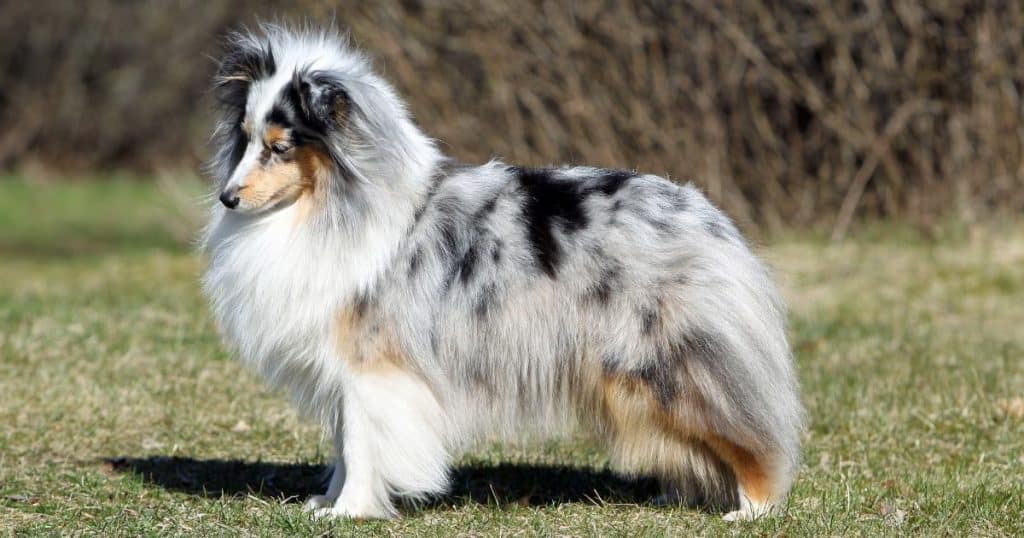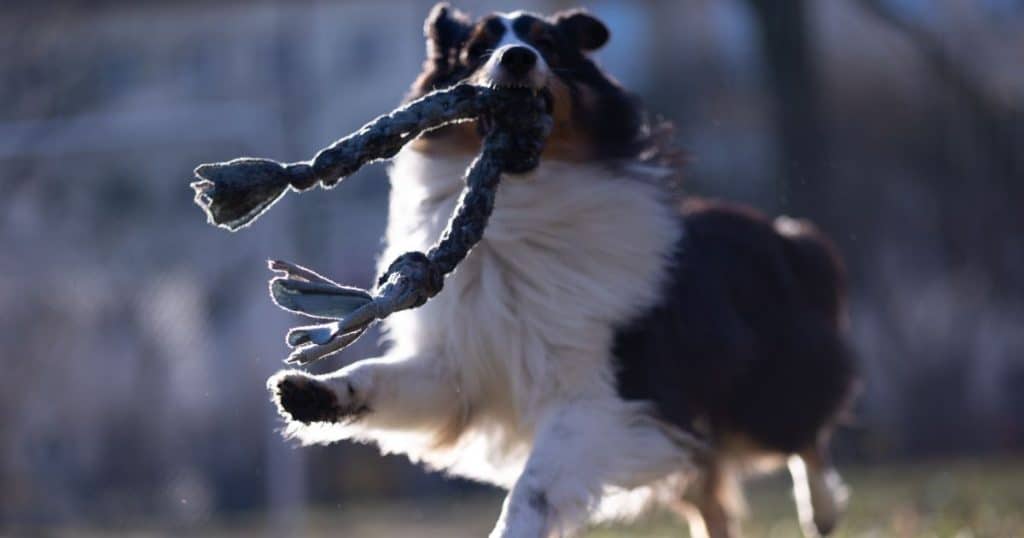Table of Contents
If you’re a proud Shetland Sheepdog owner, you’ve likely noticed how quickly your adorable furball grows. Understanding their growth patterns can be both fascinating and helpful in ensuring their well-being. This article covers everything you need to know about the Shetland Sheepdog growth chart.
As you delve deeper into the world of Shelties, you’ll discover how their size and weight change over time, as well as any differences between males and females. Curious? Let’s get started on this exciting journey through the different stages of your fluffy friend’s growth!
Shetland Sheepdog Growth Stages

Welcome! You’re here to learn about the Shetland Sheepdog growth stages, and you’re in the right place. Whether you’re a Shetland Sheepdog lover or a new owner, this section will provide you with helpful insights into their growth and development.
Puppy Stage
Let’s start with the adorable puppy stage. This stage begins at birth and lasts until around six months. During this time, Sheltie puppies go through major changes, from being completely reliant on their mom to slowly developing their own personalities.
At three months old, you’ll find that Sheltie puppies typically weigh between 6 and 11 pounds, with females being slightly smaller than males. Keep a close eye on their growth – it’ll happen fast!
Adolescent Stage
As your Sheltie reaches six months old, they enter the adolescent stage. Here, they start to look like gangly coyotes, as noted by Sheltie Planet. This period is characterized by rapid growth and changes in behavior.
Your Shetland Sheepdog will learn about submission and dominance, establishing their place in the pack. Ensuring proper socialization during this stage is crucial to help them become well-rounded adult dogs.
Adult Stage
Congratulations, your Sheltie is now fully grown! Typically, this happens between one and two years of age. You may notice their growth slowing down, but their personality and behavior will continue to mature.
The average adult Shetland Sheepdog weighs around 20-25 pounds, with females weighing slightly less than males. Enjoy this time with your now-adult furry friend—you’ve done an excellent job guiding them through their earlier development stages.
Senior Stage
Your Shetland Sheepdog becomes a senior around the age of seven or eight. Like humans, your canine companion will start to experience some changes in their physical abilities and health.
During this stage, it’s important to pay attention to their diet, exercise, and overall comfort. Regular veterinary check-ups will go a long way in ensuring a happy and healthy life for your Sheltie!
Interpreting the Shetland Sheepdog Growth Chart

Welcome to the fascinating world of Shetland Sheepdog growth charts! You might be a proud Sheltie owner, or just curious about this adorable breed. Either way, you’re in the right place to learn how to interpret these charts and better understand your furry friend’s development.
Understanding Percentiles
Percentiles on a growth chart indicate how your Shetland Sheepdog’s weight and height compare with other dogs of the same age and breed. For example, if your Sheltie is in the 75th percentile for weight, they weigh more than 75% of Shelties their age.
It’s essential to remember that every dog is unique and grows differently due to factors like genetics and nutrition. As such, percentiles are only a guideline to monitor your Sheltie’s growth and ensure they are on the right track.
Factors Affecting Growth
Several factors can influence your Sheltie’s growth, such as:
- Genetics: Just like humans, Shelties inherit genes from their parents that determine their size and growth rate.
- Nutrition: A balanced diet with appropriate nutrients is crucial for your dog’s healthy development. Be sure to provide the right amount of high-quality dog food for their age and size.
- Health issues: Certain medical conditions can affect your dog’s growth. For instance, parasites or hormonal imbalances can slow down growth, while overfeeding can lead to obesity.
When to Consult a Veterinarian
Identifying any growth-related issues early can help prevent complications and improve your Sheltie’s wellbeing. It’s a good idea to consult a vet if you notice:
- Your Sheltie’s growth seems to be stagnating, or they are below the expected height and weight range for their age.
- Your dog is losing weight or has a significant change in appetite.
- Your Sheltie is lethargic or shows signs of discomfort, which may indicate an underlying health problem.
Now that you know how to interpret the growth chart and understand the factors affecting your Shetland Sheepdog’s growth, you’re well-equipped to ensure their healthy development. Enjoy watching your furry pal grow, and remember that every Sheltie is truly unique!
Feeding and Nutrition for Optimal Growth

Hey there, Shetland Sheepdog enthusiast! You’re on track to raising a happy and healthy pup. Let’s dive into the world of feeding and nutrition by touching on their recommended diet and how much food your Sheltie needs.
Recommended Diet
Your Sheltie’s diet plays a significant role in their growth and overall health. While you may be tempted to stick to store-bought kibble, it’s essential to consider a more balanced and nutritious meal plan.
Experts suggest that a mixture of raw or cooked meat, fresh fruits, and vegetables are the ideal diet for your Sheltie’s optimal growth. This allows them to gain all the necessary vitamins and minerals, keeping them fit and fabulous! But don’t worry if you can’t manage the time to prepare these dishes every day; there are high-quality canine foods available that can provide the required nutrients as well Dog Learn.
How Much to Feed
Now that you know what to feed your furry friend, you may be wondering, “how much food does my Sheltie need?” Here’s where things get a bit tricky; your pup’s meal portion depends on their age, weight, and activity level. Let’s break it down for you:
- Under 3 months: ½ to 1½ cups of food split into four meals source.
- 3 to 5 months: 1.5 to 2 cups of food split into three or four meals source.
To give you a clearer picture, let’s say you have a typical 5-month-old Shetland Sheepdog that weighs 14 lbs (6.3 kg) source. You should be feeding them around 1.5 to 2 cups of food daily, divided into three or four meals.
Remember to keep a watchful eye on your Sheltie’s weight and adjust their food intake accordingly. By following these guidelines, you’ll be on the path toward raising a healthy and thriving Shetland Sheepdog!
Ensuring a Healthy Growth for Your Shetland Sheepdog

When it comes to your Sheltie’s growth, there’s a lot more to consider than just a growth chart! In this section, we’ll explore how to ensure your Shetland Sheepdog grows up healthy and happy through exercise, vaccinations, and spaying/neutering.
Exercise Recommendations
Maintaining an active lifestyle is essential for your Sheltie’s physical and mental well-being. These energetic pups need plenty of opportunities to stretch their legs and stimulate their minds.
Here are some exercise guidelines to keep your Sheltie in tip-top shape:
- Long walks or jogs daily – about 30 minutes to an hour
- Interactive playtime, such as fetch or frisbee
- Agility exercises like weaving poles or jumps
Remember to adjust the intensity and duration of exercise based on the age and size of your pup. They’ll thank you with endless wagging tails and tireless enthusiasm.
Vaccinations and Checkups
Protecting your Sheltie from common diseases and health issues is crucial for their growth.
Begin with a visit to the vet when they’re 6-8 weeks old, followed by regular checkups and vaccinations. Here’s a list of vital vaccinations for your pup:
| Vaccination | Age of Administration |
|---|---|
| Distemper | 6-8 weeks |
| Parvovirus | 10-12 weeks |
| Rabies | 12-16 weeks |
Be sure to consult your vet about any additional vaccinations specific to your region.
Spaying or Neutering
Deciding to spay or neuter your Sheltie is a personal choice, but there are benefits to consider:
- Preventing overpopulation
- Minimizing risk of certain cancers
- Reducing aggressive behaviors
Typically, it’s recommended to spay or neuter your Sheltie between 6 months and 1 year of age. However, consult your vet for the best timing and procedure for your pup.
By providing exercise, healthcare, and responsible family planning for your Shetland Sheepdog, you’ll ensure they grow into a healthy, loving companion ready for endless adventure.
Before You Go
So there you have it, a closer look at the growth journey of your beloved Sheltie. As we’ve learned, this agile and intelligent breed reaches its adult weight by about 37 weeks, with males being slightly larger than females.
While 13 to 16 inches is the average height range, keep in mind there can be some variation. Sizes within this range make them perfectly suited for their herding duties, as well as for life in modern homes.
Throughout your Sheltie’s growth, it’s always a good idea to monitor their weight and size to ensure a healthy development. The key to maintaining the wellbeing of your furry pal is to provide them with proper nutrition, regular exercise, and loads of love.
Remember, every Shetland Sheepdog is unique, and they might not adhere strictly to the growth chart. Don’t let slight deviations concern you, as they could simply reflect your Sheltie’s individuality. Embrace it, and enjoy the adventure of watching your furry friend grow and thrive.
Related Articles:




Leave a Reply
You must be logged in to post a comment.